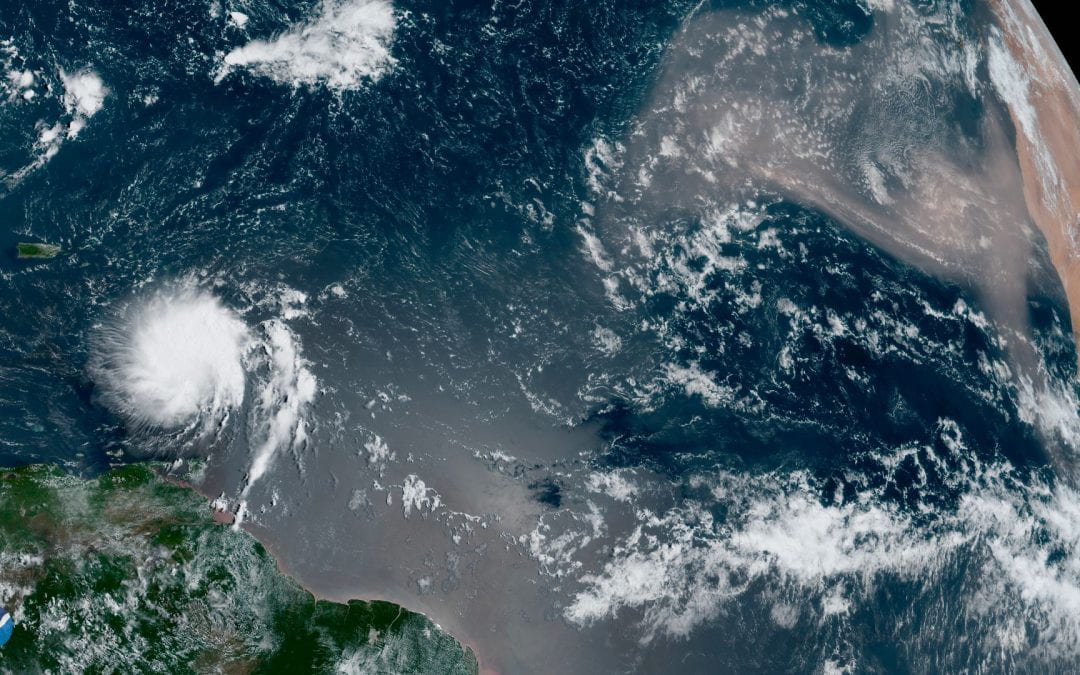Photo above: One of the largest plumes of Saharan dust in 2019 blowing across the Atlantic Ocean on Tuesday, Aug. 27, 2019, as Tropical Storm Dorian passed over the Lesser Antilles. Credit: NOAA
Does a giant plume of dust from the Saharan desert making its way across the ocean affect North Atlantic hurricanes? The Climate Extremes Modeling (CEM) Group at SoMAS, led by Dr. Kevin Reed, in collaboration with the Climate and Global Dynamics Laboratory at the National Center for Atmospheric Research, addressed this question last year in the results of a study published in Geophysical Research Letters.
The research team put together a climate model with sufficient resolution to represent tropical cyclones and ran two simulations for 1980–2012 with standard and low amounts of dust, respectively. The low dust simulation revealed that tropical cyclone frequency increased globally. Storms in the North Atlantic that are usually suppressed directly by African dust became more frequent, longer lived and slightly stronger. The lack of dust increased the destructive potential of North Atlantic storms.
Understanding how dust interacts with tropical cyclones in climate models will help us understand and prepare for the potential changes in hurricanes of the future.
The published article is available in Geophysical Research Letters.





This current dust storm provides a wonderful opportunity to study ocean fertilization on a huge scale. Is anyone currently measuring and sampling the water column down to 1800 feet to examine changes in the carbon cycle, methane fluxes, oxygen levels etc. Periodically over the next few months?
Hi Claude,
SoMAS doesn’t have any faculty currently investigating ocean fertilization, but we have alumni that have graduated from Stony Brook who have. Dr. Ajit Subramanian, now at Lamont-Doherty has some experience in this area, but it’s not clear if he is conducting research now. Unfortunately COVID has shut down a lot of field work.